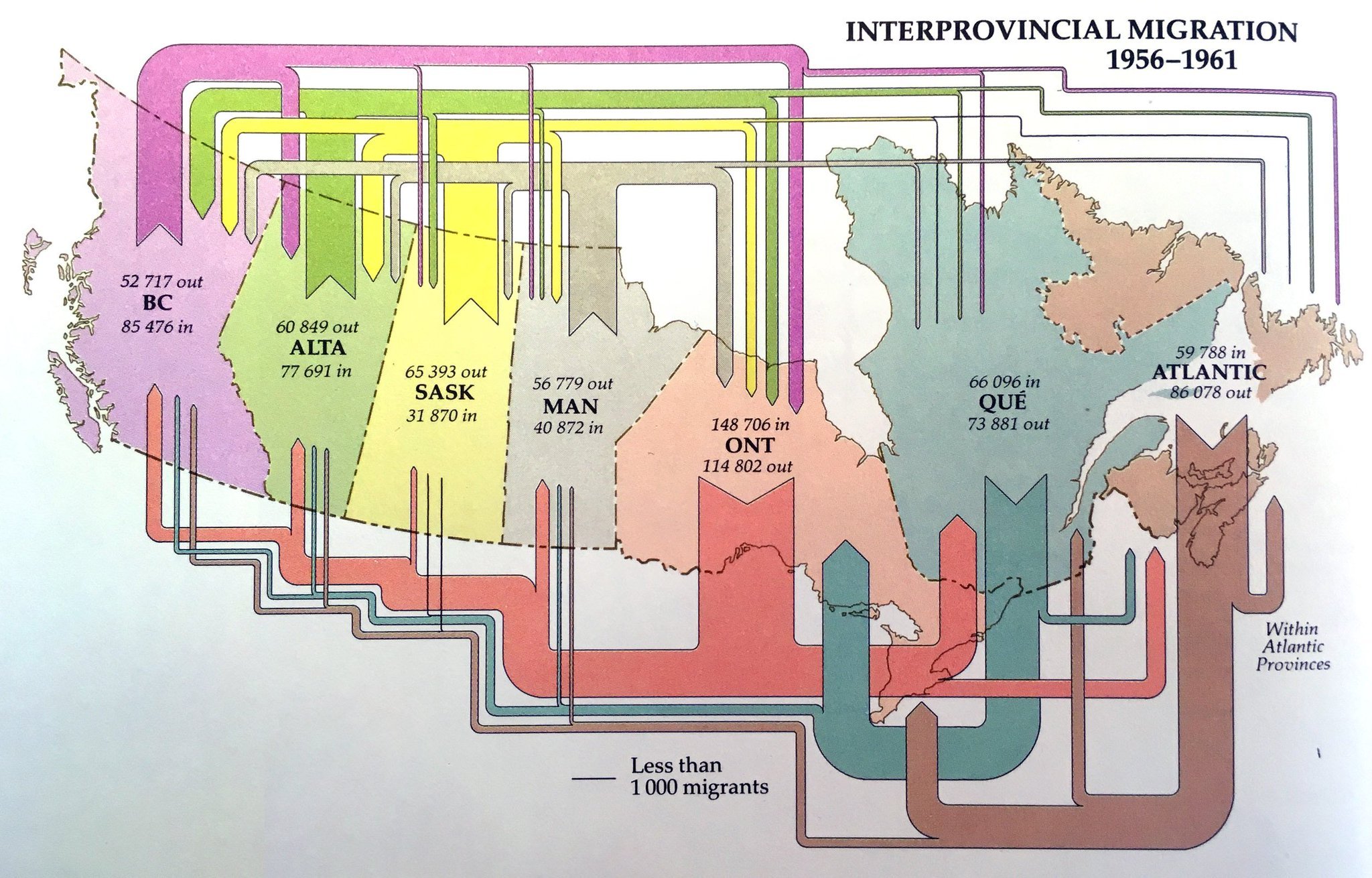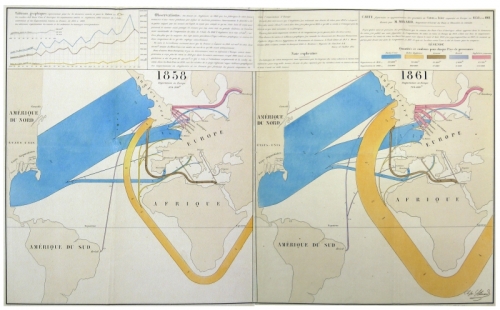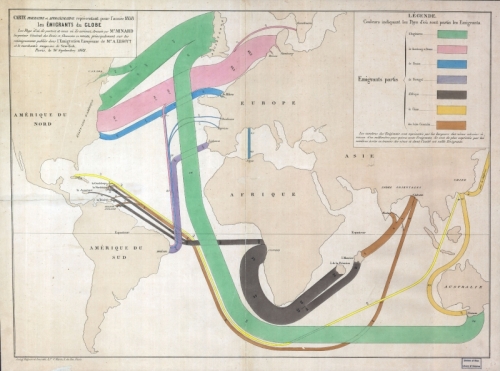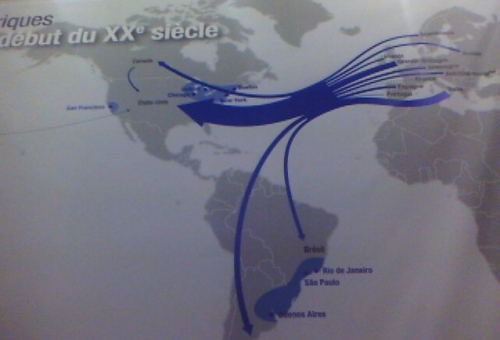Most of the Sankey diagrams I come across on the net focus on energy issues, followed by the topics greenhouse gases and material flows of different kinds. Display of cost Sankey diagrams (value streams) is less common, so are people/passenger flows. An interesting approach is presented with Sankey diagrams that show migration flows between countries, or in and out of a region.
The best one I have seen was in this summary report on ‘Europe’s Demographic Future’ published by Berlin Institute for Population and Development. On page 11 you can see the migration flows within Europe (with omissions). The widest Sankey arrows are for migration movements from Bulgaria and Romania, mainly to Spain. There seems to be a lower cut off threshold at approx. 10.000, which leads to smaller flows not being scaled linearly any more. A lot of interesting details in this one… [would have loved to reproduce it, but permission wasn’t granted].
Here are other samples for Sankey diagrams visualizing migration flows (no quantities given, exact time range unknown).
Emigration flows to North and South America in the first half of the 20th century
Refugee flows in Middle East, Africa and Asia in 2006 (clustered quantities)
Both diagrams found on My Paris Your Paris blog
I think Sankey diagrams in this context merit more attention. Will be looking for more of these…




